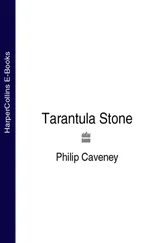Substantial caves are not by any means confined to limestone. Other notable caves are formed by solution of marble, dolomite and non-carbonate rocks such as gypsum (e.g. Optimisticheskaja in the Ukraine, 183 km long); rock salt (in arid regions); and even quartzitic sandstone (e.g. Sima Aonda in Venezuela, 362 m deep) – while lava tubes are formed by the crusting-over and subsequent draining of molten lava flows (e.g. Kazumura Cave in Hawaii, over 20 km long). The latter include the youngest of all caves, formed on the slopes of Kilauea Volcano in Hawaii within the last five years. Other significant caves may be formed in a range of different rocks and within accumulations of large talus boulders (e.g. Lost Creek in Colorado, USA), by gravity sliding (gull caves), tectonic movements, wind-, or wave-blasting and other mechanisms. Most bizarre of all is Kitum Cave on Kenya’s Mount Elgon, which has been literally eaten for 200 m horizontally into a bed of volcanic ash by generations of salt-hungry elephants.
In caving parlance, a ‘dry cave’ is one which a human visitor can explore without getting wet. While such caves may provide an easy route into an underground world of great beauty, budding cave biologists may be greatly disappointed not to find every surface festooned with strange, eyeless arthropods, armed with sweeping antennae, stalking around on matchstick legs. As stated earlier in this chapter, dry passages in tropical caves may contain huge populations of bats or birds and a wealth of guano-associated cavernicoles, but in Britain and Ireland, cave-roosting bats and the species which depend on their presence have become increasingly scarce in recent years. Nevertheless a surprisingly large number of our macrocaverns do still harbour small populations of bats and a few associated ‘battelite’ species, which will be considered in Chapters 4and 5.
Fig. 2.7 Mexican Free-tailed Bats, Tadarida brasiliensis , stream out of the entrance of Carlsbad Caverns at dusk. (Chris Howes)
The main biological interest of our dry caves is that they may contain the only accessible populations of cavernicoles primarily adapted to other, relatively inaccessible habitats. Thus, drip- or seepage-fed pools, gour pools and wet flowstone may harbour aquatic mesocavernicoles; and rock piles, flowstone pockets and ‘deep cave’ or ‘stagnant air’ environments may give us a rare glimpse of the terrestrial mesocavernicolous fauna.
Vadose macrocaverns (wet caves)
Cave streams may contain water derived from permanently-flowing surface streams, swallowed through an open sinkhole, or percolation water which has collected gradually from a large number of mesocavernous inputs. Those fed entirely by percolation water or seasonal run-off tend to hold more biological interest, as the populations they contain (being genetically isolated from surface habitats) may have evolved specialized features.
Surface streams arrive in the cave complete with a biota of their own, most of which will survive quite well in darkness for some considerable time, though few species may succeed in reproducing. Apart from the lack of growing green plants, and a tendency to experience less seasonal temperature change, such streams do not differ significantly as a habitat from streams above ground. The terrestrial habitat in stream passages is usually draughty and moist. Its fauna may include the adult stages of aquatic insect larvae swept in with the sinking stream, and various predators, such as spiders, which feed on them, plus a range of detritivorous cavernicoles.
Where stream passages enter the phreas (cavers’ ‘sumps’, marking the end of exploration to all but divers) it is not unusual to find accumulations of organic detritus deposited by floods. Given a suitable microclimate, such places may be well populated by specialized cavernicoles, or ‘troglobites’. Indeed, in many food-poor cave systems (such as those in mountainous areas of the Pyrenees and Cantabrians) this may be the only habitat in which cavernicoles occur in any numbers.
Water-filled macrocaverns (phreatic caves)
The chemistry, food supply and fauna of phreatic waters is determined to a large extent by their mode of entry into the cave. Underground waters are classed as autogenic (originating as through-soil percolation via diffuse seeps and subcutaneous flow) or allogenic (sinking streams). The former tend to be lower in organic content, less chemically aggressive by the time it reaches the phreas and may carry a lower sediment load. Phreatic waters may have a very different chemistry to the vadose waters which feed them, because they are unable to de-gas the carbon dioxide produced by microbial oxidation of organic materials, or to replenish oxygen used up in such decomposition.
The rate of flow in large-diameter phreatic tubes is generally greater than in phreatic mesocaverns, but is still often sluggish enough to accommodate small, slow-swimming cavernicoles (such as Niphargus fontanus ), which avoid fast-moving vadose streamways.
In recent years cave divers have penetrated great distances into freshwater phreatic macrocaverns, and to considerable depths, but to date no detailed studies have been made of the biota of this remote and fascinating environment.
Water-filled mesocaverns
Most of our knowledge about the structure of mesocaverns comes from looking at exposed joints or bedding planes in limestone quarries, or occasionally caves, and from the work of karst hydrologists. We know that the very earliest stages of cave development occur under phreatic conditions, eventually creating inter-connected systems of conduits which may be in any plane, from horizontal to vertical. Phreatic mesocaverns may take the form of wiggly networks of small-diameter tubes ( anastomoses ), or thin, but laterally-extensive cracks, or narrow shafts – and are probably as common in other cavernous rocks, such as chalk or gypsum, as in limestone. Evidence that such spaces are inhabited comes from the animals found in well-water over the centuries. It is ironic that the earliest records of our cave fauna should be from a habitat about which little more is known today than a century-and-a-half ago, when Philip Henry Gosse wrote:
“recently, investigations in various parts of the world have revealed the curious circumstance of somewhat extensive series of animals inhabiting gloomy caves and deep wells, and perfectly deprived even of the vestiges of eyes … even in this country we possess at least four species of minute shrimps [all of which] have been obtained from pumps and wells in the southern counties of England, at a depth of thirty or forty feet from the surface of the earth.”
There is no way at present of collecting information directly about how aquatic cavernicoles use mesocavernous bedrock cracks, but it seems likely that great local variation exists within this habitat in terms of oxygen concentrations, pH and food supply. Such factors are likely to influence the distributions of the fauna, and will be discussed in Chapter 4. Fortunately there are other, more accessible types of water-filled mesocavernous habitat which are easier to study. They include the deeper interstices of stream-bed cobbles ( phreatic nappes ), and a peculiar sub-soil phreas of mesocavernous dimensions which occurs on the surface of impervious silt or clay deposits in mountainous areas of Europe (the hypotelminorheic medium ). In both these habitats, the food supply comprises dissolved or finely particulate organic material, and the waters tend to be rather low in oxygen; and both contain faunas very similar to those of limestone mesocaverns.
Amphibious mesocaverns
As no detailed investigation of the biology of air-filled mesocavernous habitats has yet been attempted, we are forced to infer what we can about the conditions within them from studies of limestone caves and other similar habitats.
Читать дальше












